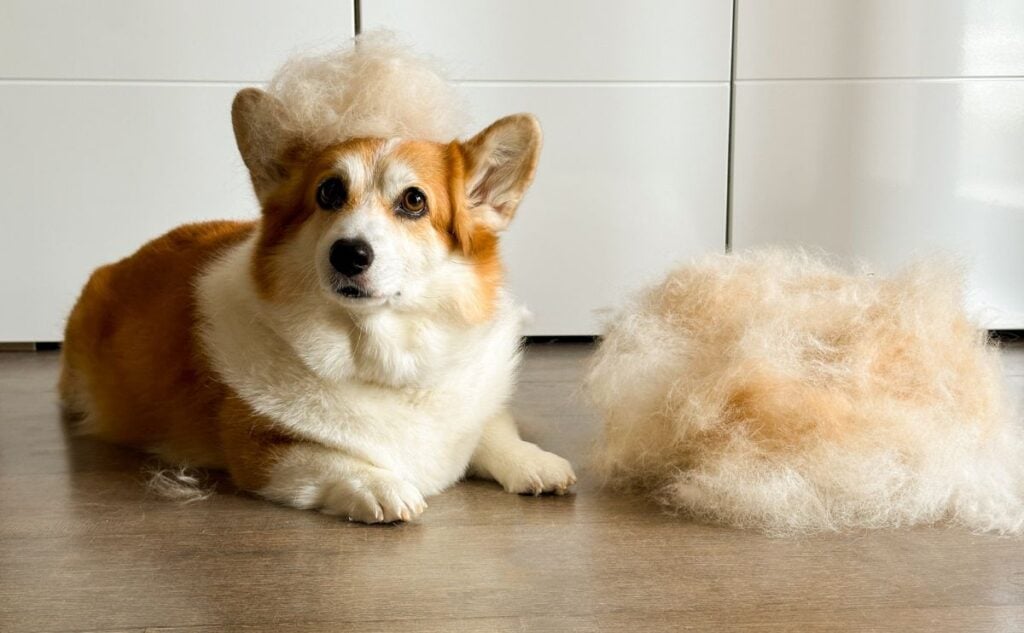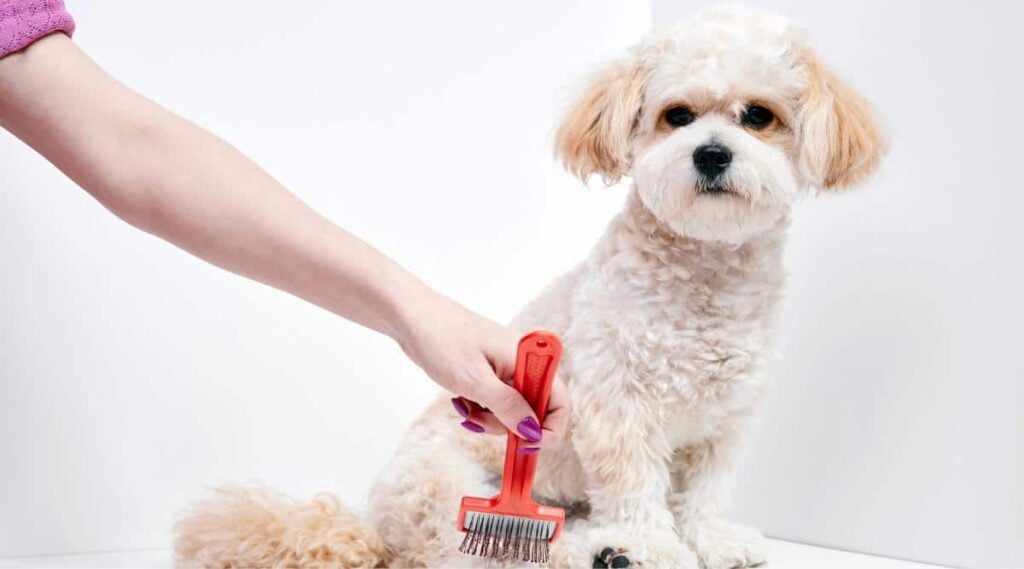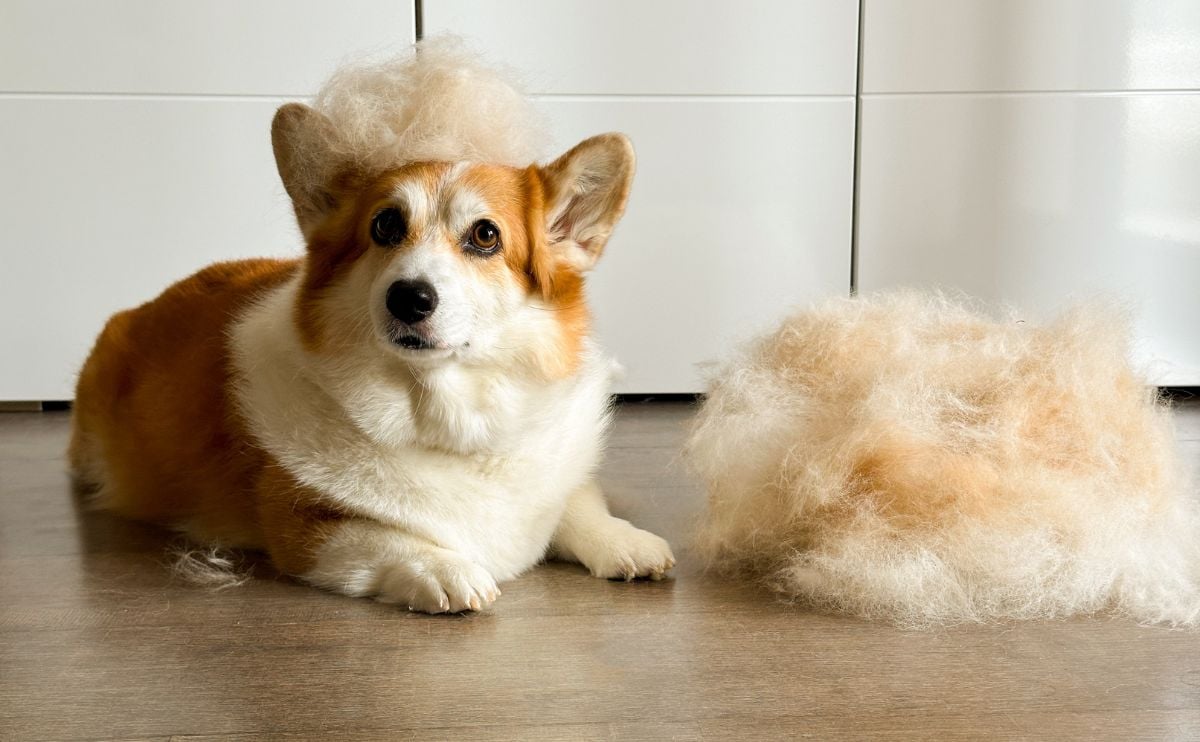If you live with one or two cats, you’re likely no stranger to hairballs—those damp, matted fur clumps your cat might cough up after a round of retching. Cats with long coats or excessive shedding are especially prone to them. But what about dogs? Can they develop hairballs too? Let’s explore hairballs and trichobezoars in dogs.

Image credit: Maryna, Adobe Stock
Do Dogs Get Hairballs?
Can dogs develop hairballs from licking? Yes, they can—though less commonly than cats. Dogs with long fur, infrequent grooming, or heavy shedding are most at risk. While I’ve treated many cats with hairballs, I’ve yet to see a dog case firsthand, though some vet colleagues have.
What Is A Trichobezoar?
Trichobezoar is another term for a hairball—a compacted mass of fur and debris that blocks the digestive tract. These blockages typically form in the stomach or small intestine. Larger intestines have more space and natural lubrication, making blockages there rare, but trichobezoars can still cause constipation-like symptoms if they lodge there.
Dog Hairball Symptoms
Signs of a hairball in dogs may include coughing, gagging, vomiting (with or without expelling the hairball), fur in stools, decreased appetite, straining to defecate, constipation, or abdominal discomfort (like whining or assuming a ‘praying’ position). Notably, some dogs show no symptoms until the hairball is coughed up, passed, or causes a blockage.
What Do Dog Hairballs Look Like?
Dog hairballs resemble cat hairballs but are often larger and more dense. They typically appear as sausage-shaped clumps of matted fur. Their texture varies: coughed-up hairballs may be coated in saliva, mucus, or bile, while those passed in stools might be mixed with feces or mucus.
Dog Hairball Treatment
Treatment for dog hairballs depends on symptoms and location. If your dog coughs up a hairball and acts normal afterward, no treatment may be needed—just keep them hydrated and monitor. For gut blockages, symptoms like persistent vomiting, dehydration, or weakness require immediate vet care. Mild cases may respond to oral lubricants to help the hairball pass. Severe blockages may need surgical removal.
Affording Expensive Vet Care
Intestinal blockages are serious and costly, with surgery potentially costing thousands. Pet insurance can help cover these unexpected expenses, but it’s crucial to enroll before health issues arise—pre-existing conditions are typically excluded. Researching reliable pet insurance options early can protect both your dog’s health and your finances.

How Can You Prevent Dog Hairballs?
Preventing dog hairballs starts with regular grooming—daily brushing removes loose fur, reducing ingestion during self-cleaning. Keeping your dog hydrated also helps, as proper hydration lowers the risk of gut blockages. For persistent issues, vets may recommend oral supplements to bind fur and aid passage. Always consult your vet for personalized prevention strategies.
Frequently Asked Questions
My Dog Threw Up A Hairball, What Should I Do?
If your dog vomits a hairball but behaves normally before and after, it’s usually not cause for concern. Monitor them closely. If other symptoms (like lethargy or loss of appetite) appear, contact your vet.
Is There A Dog Hairball Remedy?
Hairball remedies for dogs often work similarly to cat products—binding fur and lubricating the digestive tract. Though many are labeled for cats, your vet can recommend dog-safe options.
What Is The Dog Hairball Blockage Treatment?
Severe hairball blockages in dogs can lead to vomiting, dehydration, abdominal pain, or collapse. Mild cases may resolve with oral lubricants, but severe blockages often require surgical removal.
Need Tips On Keeping Your Dog’s Coat Under Control?
Maintaining a healthy coat is key to preventing hairballs. For detailed grooming tips—covering fur, nails, ears, and more—explore comprehensive guides on dog grooming, which often include product recommendations for optimal care.

